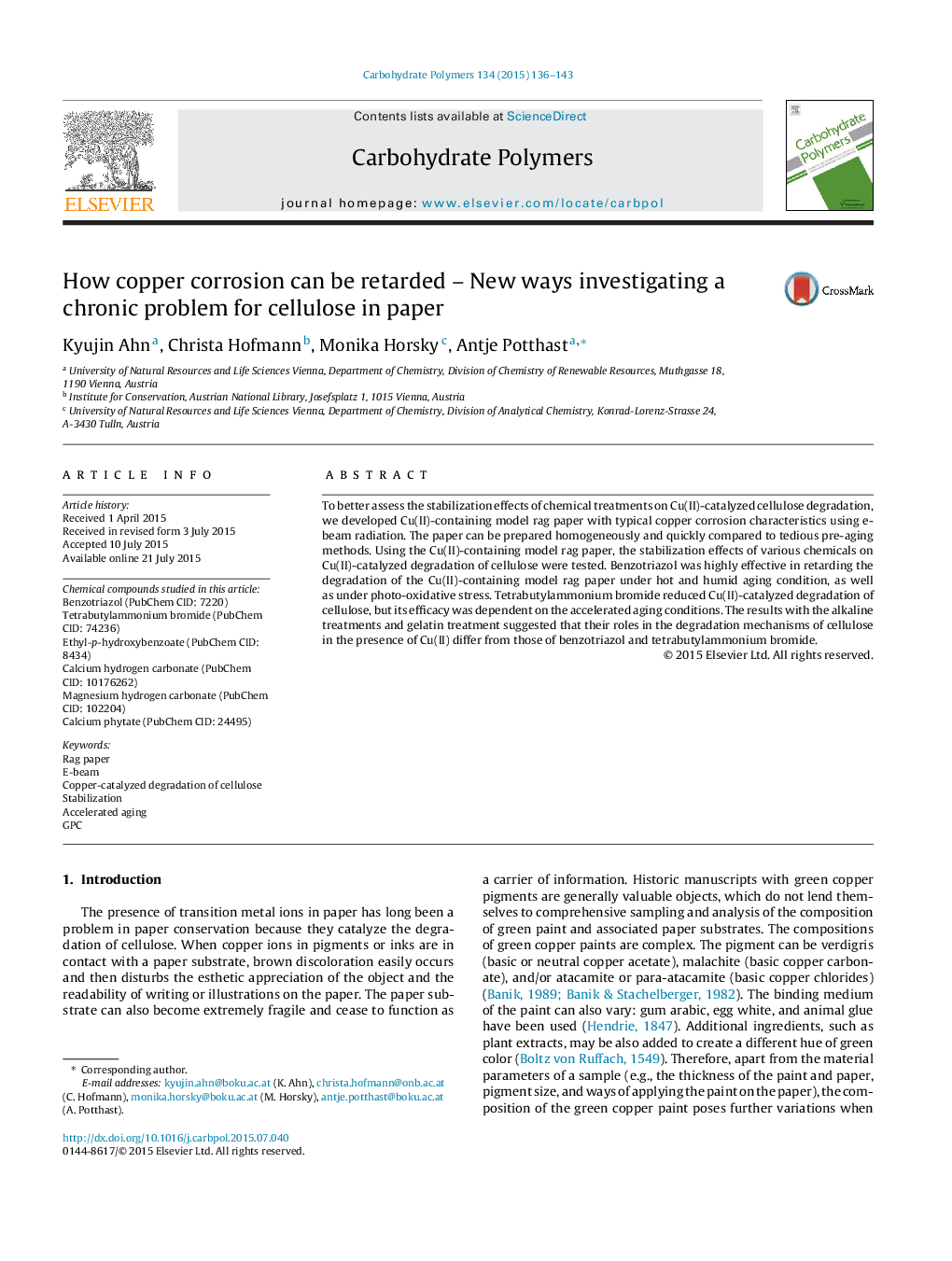| Article ID | Journal | Published Year | Pages | File Type |
|---|---|---|---|---|
| 7786906 | Carbohydrate Polymers | 2015 | 8 Pages |
Abstract
To better assess the stabilization effects of chemical treatments on Cu(II)-catalyzed cellulose degradation, we developed Cu(II)-containing model rag paper with typical copper corrosion characteristics using e-beam radiation. The paper can be prepared homogeneously and quickly compared to tedious pre-aging methods. Using the Cu(II)-containing model rag paper, the stabilization effects of various chemicals on Cu(II)-catalyzed degradation of cellulose were tested. Benzotriazol was highly effective in retarding the degradation of the Cu(II)-containing model rag paper under hot and humid aging condition, as well as under photo-oxidative stress. Tetrabutylammonium bromide reduced Cu(II)-catalyzed degradation of cellulose, but its efficacy was dependent on the accelerated aging conditions. The results with the alkaline treatments and gelatin treatment suggested that their roles in the degradation mechanisms of cellulose in the presence of Cu(II) differ from those of benzotriazol and tetrabutylammonium bromide.
Related Topics
Physical Sciences and Engineering
Chemistry
Organic Chemistry
Authors
Kyujin Ahn, Christa Hofmann, Monika Horsky, Antje Potthast,
